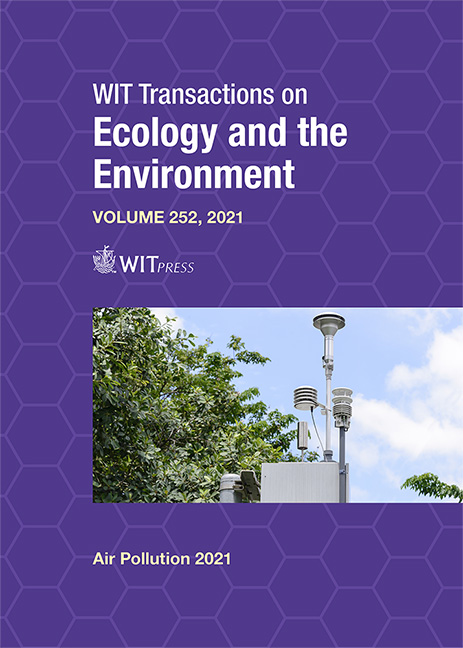FUNCTIONAL GROUPS CHARACTERISATION OF INDOOR PARTICULATE MATTER IN SCHOOLS
Price
Free (open access)
Transaction
Volume
252
Pages
6
Page Range
97 - 102
Published
2021
Paper DOI
10.2495/AIR210091
Copyright
Author(s)
JOANA V. BARBOSA, JULIANA P. SÁ, MARIA C. M. ALVIM-FERRAZ, FERNANDO G. MARTINS, SOFIA I. V. SOUSA
Abstract
School-age children spend most of the day at school. During this period, and regarding indoor activities, they are exposed to pollutants, namely particulate matter (PM), which can originate from dust resuspension, furniture, building materials, cleaning activities and be influenced by ventilation rates. Identifying the chemical composition of PM is essential to minimise its effects on human health. Thus, the main aim of this study was to chemically characterise the composition of indoor PM in a pre-school classroom in the PM10 fraction. Indoor concentrations of PM1, PM2.5 and PM10 were continuously measured in a pre-school classroom for approximately 2.5 days. Indoor hourly mean concentrations were compared with WHO guidelines. Simultaneously, particles were gravimetrically collected for approximately 7 days. FTIR was used to chemically characterise the PM functional groups. The results showed an increase in PM concentration at the beginning of morning activities, which alternates with decreases and increases, according to children’s occupation period, as expected. WHO guidelines were exceeded more than 61% of the time for PM2.5 and 17% for PM10. FTIR spectra allowed to identify the chemical composition of PM, namely the bands assigned to ammonium, aliphatic carbon, carbonyl group, nitrates, and sulfates. The presence of sulfates (probably ammonium sulfate and more acidic sulfate species) and nitrates (ammonium nitrate), which are formed in the atmosphere, suggests the influence of outdoor air.
Keywords
indoor air quality, particulate matter (PM), FTIR characterization, pre-school classroom, children





